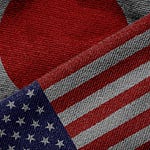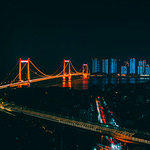This week, we talk about solar power—a long overdue topic on Decouple. In the past, guests have often been critical of the value of renewables on grids without extensive storage, and of the quality of jobs that politicians often claim when justifying renewables programs. Today, however, we drop preconceptions and get to the nuts and bolts. My guest is Seaver Wang, director of the Climate and Energy Research Program at the Breakthrough Institute. Despite its imperfections, solar power has a remarkable story, from its technological origins to its dramatic cost reductions in the last decade to the sheer scale of new capacity being added in places like China. We cover these topics and more in this episode: the Solar Masterclass.
We talk about
Historical roots and evolution of solar technology
Impact of the German Energiewende and feed-in tariffs
China's rise to dominance in solar manufacturing
Energy-intensive production processes of polysilicon
Controversy over Uyghur forced labor in Xinjiang
Solar’s lifecycle emissions and environmental impacts
Dramatic cost reductions and economies of scale
Limitations and misconceptions in distributed solar
Future integration with battery storage
Role of geopolitical and ethical issues in solar supply chains
Deeper Dive
Solar cells began in American laboratories, at first a mere scientific curiosity. Its first practical form emerged at Bell Labs, where silicon solar cells achieved a then-astonishing 6% efficiency. One of the first notable uses was to power satellites, and the technology gained even more momentum following U.S. government support during the 1970s oil crisis. Though American innovation laid the groundwork, solar’s true revolution began later, in Germany. Through generous feed-in tariffs, Germany ignited a global solar industry, attracting massive Chinese investment and scale.
“The world ought to thank Germany for the Energiewende, for being the early mass buyer of solar panels.” – Seaver Wang
China’s entry transformed solar from a niche technology to a global commodity. To do so has required massive amounts of energy. Polysilicon production, for instance, takes up to five times more electricity per ton than aluminum smelting, which itself is sometimes called “congealed electricity” for its high power requirements. Much of this energy comes from coal-fired power plants in Xinjiang and Inner Mongolia, where satellite imagery shows colossal coal mines directly feeding solar factories.
Xinjiang’s involvement, however, brings darker issues to the forefront. Credible reports reveal that Uyghur workers, many under coercive conditions, contribute to the solar industry’s supply chains. Although Wang clarifies that this forced labor isn’t a main driver of solar’s low costs, it remains an ethical stain. Wang draws parallels between China’s treatment of Uyghur muslims and other atrocities against minorities by governments through history.
Despite these marks against China’s solar supply chain, the results of “involution capitalism” running its course in solar has been almost miraculous. Modules costing 80 cents per watt a decade ago now go for 10 cents. Economies of scale, relentless optimization, and fierce internal competition in China drive these savings.
“The reason why China is good at solar manufacturing is… akin to why China is good at metals and critical minerals: cheap energy and cheap feedstock.” – Seaver Wang
Its intermittency, low grid-firming abilities, and other challenges aside, solar power has undeniably reshaped global energy. But solar-maximalist visions, like those of nuclear advocates, can go too far. Solar enthusiasts speak of endless possibilities, even "energy too cheap to meter," recalling past nuclear-era promises. Yet Wang stresses realism. Massive battery deployments in places like California show solar’s growing flexibility, but crucial industrial processes still demand stable, constant power—often from coal or gas if nuclear remains unavailable.
Ultimately, solar’s rise challenges simplistic narratives. It’s neither purely clean nor purely compromised. Rather, solar represents the messy reality of energy transitions: enormous promise intertwined with ethical dilemmas, and technical and industrial challenges.
Listen to the full interview:
Support Decouple
If you enjoy our work, please consider keeping it free to the public by pledging your support on Substack or making a tax-deductible donation through our fiscal sponsor.
Until next time.
Keywords
solar energy, polysilicon production, China solar industry, Energiewende, solar cost reduction, energy geopolitics, industrial scale manufacturing, battery storage, renewables, ethics












